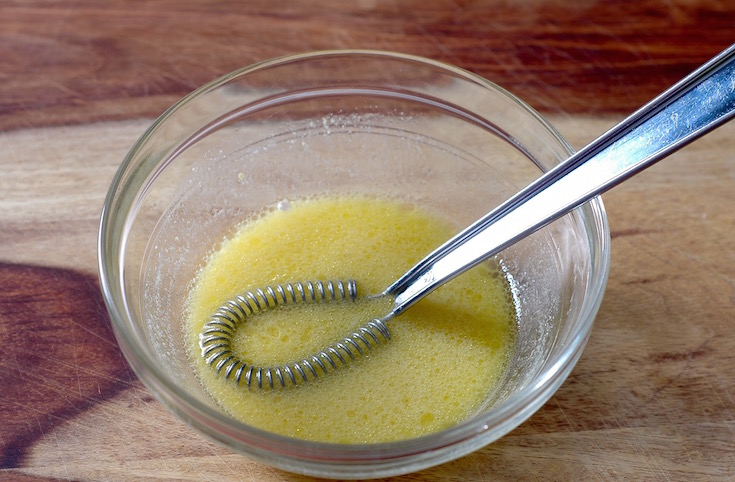No doubt about it, week night dinners in a household with kids are always stressful. You’re tired, you’re transitioning from day to evening activities, and the kids are clamoring for something to eat, preferably from one of their favorite food groups, somewhat white, mostly white, or entirely white. At times like that, it’s understandably tempting to abandon your resolve to eat healthier and ply them with french fries and a soon-to-be paler version of Kraft’s iconic mac & cheese in exchange for a bit of peace and quiet.
But before you give in to that impulse, consider the following option. Why not do as the Romans do (and the Spanish, and the French, and the Greeks, among others) and serve up a small plate of something healthy that your kids can nibble on while you go about the business of preparing the evening meal?
The idea of nibbling on small plates of food at the start of a meal is nothing new in some parts of the world. The custom is believed to have originated in ancient Persia, where the well-off would host lavish banquets that included a variety of finger foods eaten to encourage the drinking of wine. The biblical Book of Esther, which takes place at the height of the Persian empire, opens with just such a feast.
Since then, many of the countries that surround the Mediterranean Sea have embraced the culture of small plates. The Romans have long delighted in their antipasti and the Spanish their tapas. The French enjoy hors d’oeuvres, while the Greeks savor their meza.
The arrival of Mediterranean-style small plates in the U.S. is a more recent event. Some say it can be traced to the opening of celebrity chef Jose Andres’ restaurant Jaleo in Washington, D.C. in 1993. I adore the place, with its wide range of Spanish themed foods expertly prepared. The sangria isn’t bad either.
But recently, I discovered a new small plates restaurant that is giving Jaleo a run for its money in my book. It’s Philadelphia-based Zahav, a restaurant that offers an Israeli-style small plates menu. I discovered Zahav online about a year ago and had been longing to visit it ever since. I finally had my opportunity when my family visited Philly over the July 4th weekend. Following daytime tours of Independence Hall, the Jewish Museum, and the Franklin Institute, my family (kids included) eagerly devoured a Saturday night feast made up of several salads, hummus with laffa (a type of Israeli flatbread), chicken and beef shashlik (Israeli meat kabobs), and small plates of expertly prepared vegetables too numerous to mention.
By now, you’re probably wondering what this detour among two U.S. restaurants famous for their small plates menus has to do with feeding kids at dinner time. The answer is simple. Small plates are perfect for busy parents trying to get dinner on the table in a hurry. All of the components can be made in advance and stored in the refrigerator. Then, when you’re faced with a ravenous child demanding your attention just as you’re beginning to think about dinner, you can pivot to the fridge, pull out the components of a Mediterranean-style small plate, and whip up a snack that doubles as dinner’s first course. Better yet, if your child is old enough, he or she can do the assembling part, which will only add to its appeal.
Today’s recipe is one idea for a weeknight small plate that I adapted from a dish I enjoyed at Zahav. It’s a salad of roasted carrots nestled on a bed of creamy labneh (yogurt cheese), drizzled with a lemon juice-based vinaigrette, and garnished with a spoonful of crushed pistachios and a sprinkle of the Middle Eastern herb mixture za’atar. It’s beautiful, healthy and delicious.
Most importantly, it’s super easy to make. Absolutely all of these components can be purchased, made in advance, or replaced with another similar ingredient. The carrots can be peeled, cut into chunks, and roasted over a weekend. Labneh is simply strained plain Greek yogurt that you can either make yourself or purchase at many grocery stores. If you don’t want to bother with making a vinaigrette, you can drizzle some lemon juice and olive oil separately. The crushed pistachios can be replaced with crushed almonds or walnuts and the za’atar with dried thyme.
So next time you’re tempted to appease your child’s ravenous pre-dinner appetite with something white, try my idea for a Mediterranean-style small plate. Your child’s taste profile may be more colorful than you think.
Roasted Carrots with Labneh
Salad Ingredients
1 pound (450 grams) carrots
1 tablespoon olive oil
¼ teaspoon salt
¼ teaspoon pepper
¾ cup (180 ml) labneh (purchased or homemade)*
6 tablespoons (90 ml) pistachios, crushed
za’atar or dried thyme
Vinaigrette Ingredients
1 tablespoon lemon juice (preferably freshly squeezed)
1 tablespoon extra virgin olive oil
1/2 teaspoon Dijon mustard
Directions
1. Roast the carrots: Preheat the oven to 400° F (200°C). Peel and trim the carrots and then cut them into pieces having roughly equal volume.** (This means thinner pieces should be longer and thicker pieces should be shorter. This will help the pieces to cook evenly.) Toss the carrot pieces with the olive oil, salt and pepper in a bowl, and place them on a sheet pan lined with nonstick foil or parchment paper. Roast them in the preheated oven for 12-15 minutes depending on their size. (I prefer a shorter roasting period so that the carrots retain some crunch. You may need to experiment to find the number of minutes that suits your preference.) Set aside to cool.
2. While the carrots are roasting, make the vinaigrette: In a small bowl, whisk the Dijon mustard and lemon juice together until the mustard has fully dissolved into the lemon juice. Drizzle the olive oil into the mixture, whisking continuously until the oil is fully incorporated and the mixture appears to have thickened slightly.
3. Assemble the salad: After the carrots have cooled, smear two tablespoons of labneh on each of six salad plates and arrange ⅙ of the carrot pieces on top of the labneh. Drizzle with a teaspoon of the lemon vinaigrette, scatter one tablespoon of the chopped pistachios over the carrots and labneh, and then sprinkle with a pinch or two of the za’atar or dried thyme. Serve immediately.
*If you can’t find store-bought labneh in your area, you can easily make your own: Place two cups of plain (unflavored and unsweetened) Greek yogurt in a colander or mesh strainer lined with a double layer of cheesecloth. Store in the refrigerator in a bowl (to collect the liquid) for two to three days or until the yogurt has reduced in volume by at least half.
**If you prefer, you can cut each carrot on an irregular diagonal: Starting at the thicker end, make a diagonal slice, turn the carrot a quarter turn and make another diagonal slice, repeating until you reach the end of the carrot.
Make Ahead: You can make this recipe ahead through step 2 and store the roasted carrots and vinaigrette in the refrigerator for up to a week. Assembling the salad takes only a few minutes.
Copyright© A Busy Mom’s Kitchen
https://abusymomskitchen.com/2015/07/19/roasted-carrots-with-labneh/#more-1736











One thought on “Roasted Carrots with Labneh”